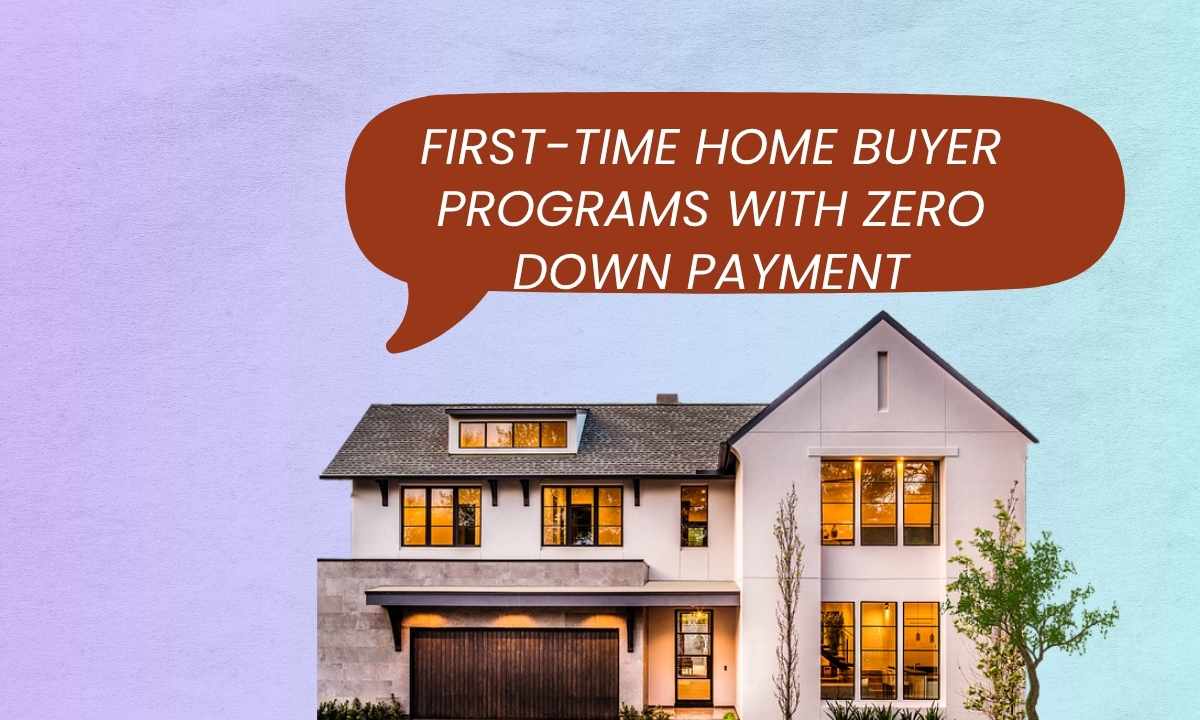Buying a home for the first time is a significant milestone, both emotionally and financially. For many people, it symbolizes stability, independence, and the fulfillment of a lifelong dream. However, the process of home buying can be complex and financially challenging—especially when it comes to saving for a down payment. Traditionally, lenders require a substantial upfront payment, often 10% to 20% of the home’s price, which can take years to accumulate. For first-time buyers, this can be a major roadblock on the path to homeownership.
Fortunately, a number of zero down payment home buyer programs exist to help qualified individuals overcome this hurdle. These programs are designed to make homeownership more accessible to people who may not have significant savings but have a stable income and good credit. Whether offered through government-backed agencies or private lenders, zero down payment options eliminate the need for large cash deposits, allowing more people to enter the housing market. Understanding how these programs work and who qualifies for them is essential for any aspiring homeowner seeking to take the leap without depleting their savings.
USDA Loans for Rural and Suburban Areas
The U.S. Department of Agriculture (USDA) offers one of the most popular zero down payment options for first-time homebuyers through its Rural Development Loan program. This loan is aimed at people purchasing homes in eligible rural and suburban areas, not necessarily farms. It provides 100% financing, meaning no down payment is needed, and the interest rates are often lower than those of conventional loans. To qualify, applicants must meet certain income limits and choose a home in a USDA-designated area. This program is ideal for buyers looking outside of densely populated urban centers.
VA Loans for Military Members and Veterans
The Department of Veterans Affairs (VA) provides zero down payment home loans to eligible service members, veterans, and in some cases, surviving spouses. VA loans come with several benefits, including no private mortgage insurance (PMI) requirement, competitive interest rates, and more lenient credit score standards. These loans are available through private lenders but are backed by the government, reducing the lender’s risk and helping borrowers secure favorable terms. For qualified military families, VA loans are often the most affordable and accessible path to homeownership.
Down Payment Assistance (DPA) Programs
Many states and local governments offer down payment assistance programs that effectively turn a low-down-payment mortgage into a zero-down deal. These programs may offer grants or second loans to cover the required down payment, and some are forgivable over time if the homeowner stays in the property for a set number of years. While DPA programs vary by region, most are designed to support low-to-moderate-income families and first-time buyers. Some programs even offer closing cost assistance, making it easier to handle the full financial burden of purchasing a home.
Freddie Mac and Fannie Mae 97% LTV Loans
Freddie Mac’s Home Possible and Fannie Mae’s HomeReady loan programs offer financing with loan-to-value (LTV) ratios of up to 97%, which means buyers only need to come up with 3% of the purchase price. Though not technically zero down, these programs can be paired with other assistance options to eliminate out-of-pocket costs entirely. Both programs are tailored for low- to moderate-income buyers and allow flexible sources of down payment funds, including gifts or grants. These options make it easier for people with limited savings but good financial standing to qualify for a mortgage.
Local and State First-Time Buyer Grants
Many cities and states offer specific grant programs designed to promote homeownership among first-time buyers. These grants typically do not require repayment and can be used toward both down payments and closing costs. Eligibility requirements usually include income limits, residency conditions, and completion of a homebuyer education course. Since these grants are often funded annually and may be limited in number, it’s crucial to apply early and work with a lender or real estate agent familiar with local resources. These programs can provide a substantial boost for buyers struggling to cover upfront costs.
Lender-Specific Zero Down Payment Programs
Some private lenders have created their own zero down payment programs to attract first-time homebuyers. These are usually conventional loan products with modified requirements, such as waived down payments for certain income levels or professions like teachers, healthcare workers, and first responders. These programs may not be available everywhere and often require good credit and proof of consistent income. Still, they represent another avenue for buyers who do not qualify for federal programs but have stable finances and a desire to purchase their first home without the burden of a large down payment.
Final Thoughts
The dream of owning a home no longer has to be put on hold due to a lack of savings for a down payment. With various zero down payment programs now available across the United States, first-time buyers have more options than ever before. Whether you’re a veteran, live in a rural area, or qualify for state-based assistance, the path to homeownership can be more accessible and affordable than it may appear. It’s essential to research and understand the terms of each program, evaluate your financial readiness, and work with a knowledgeable mortgage advisor to find the best fit for your situation. With the right planning and resources, you can turn your dream of owning a home into a reality—even with zero down.










